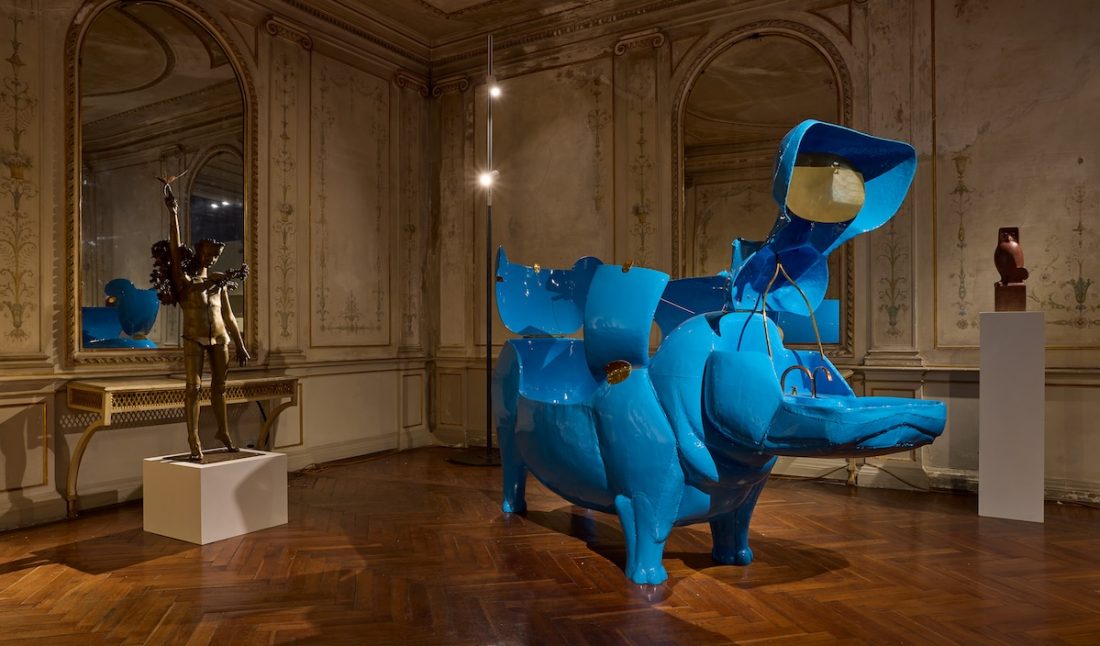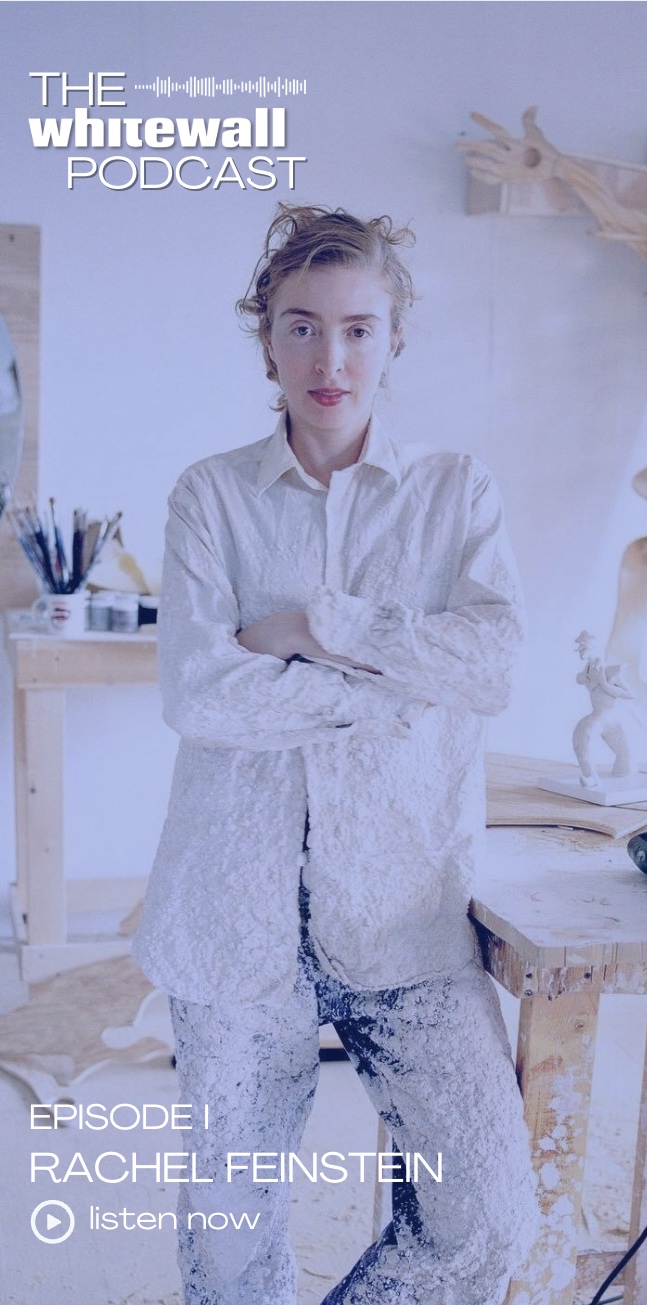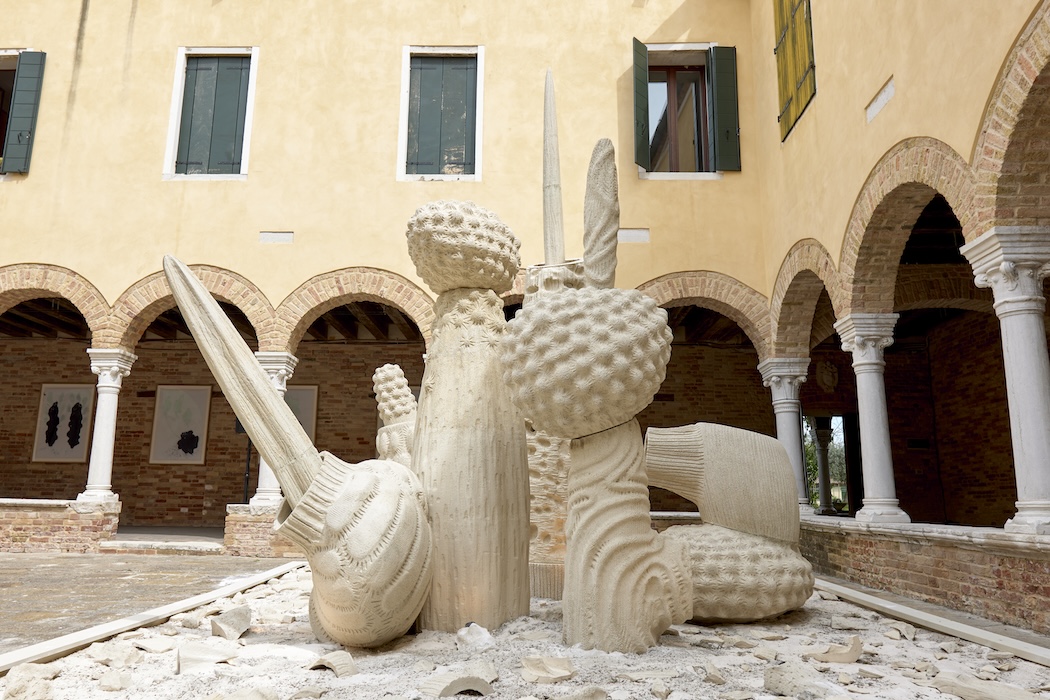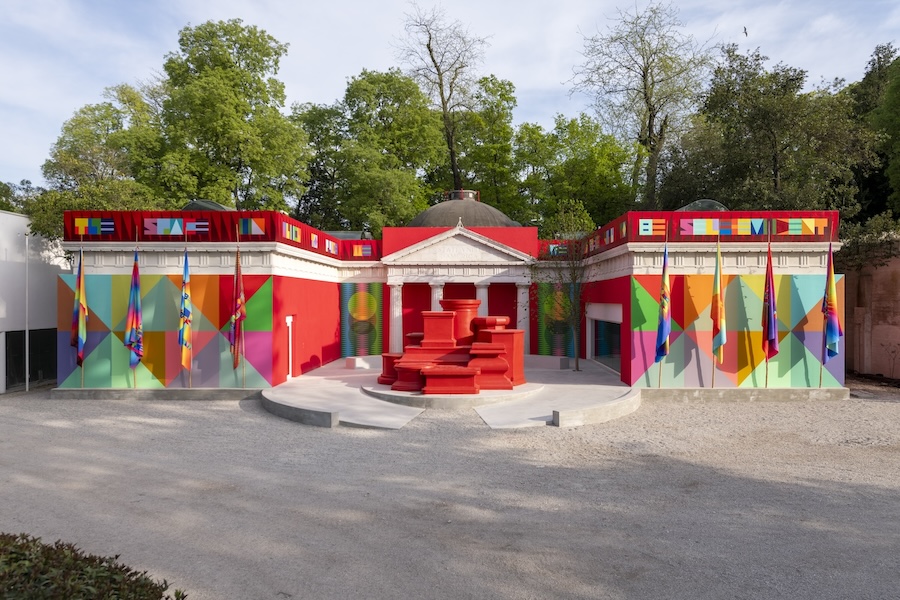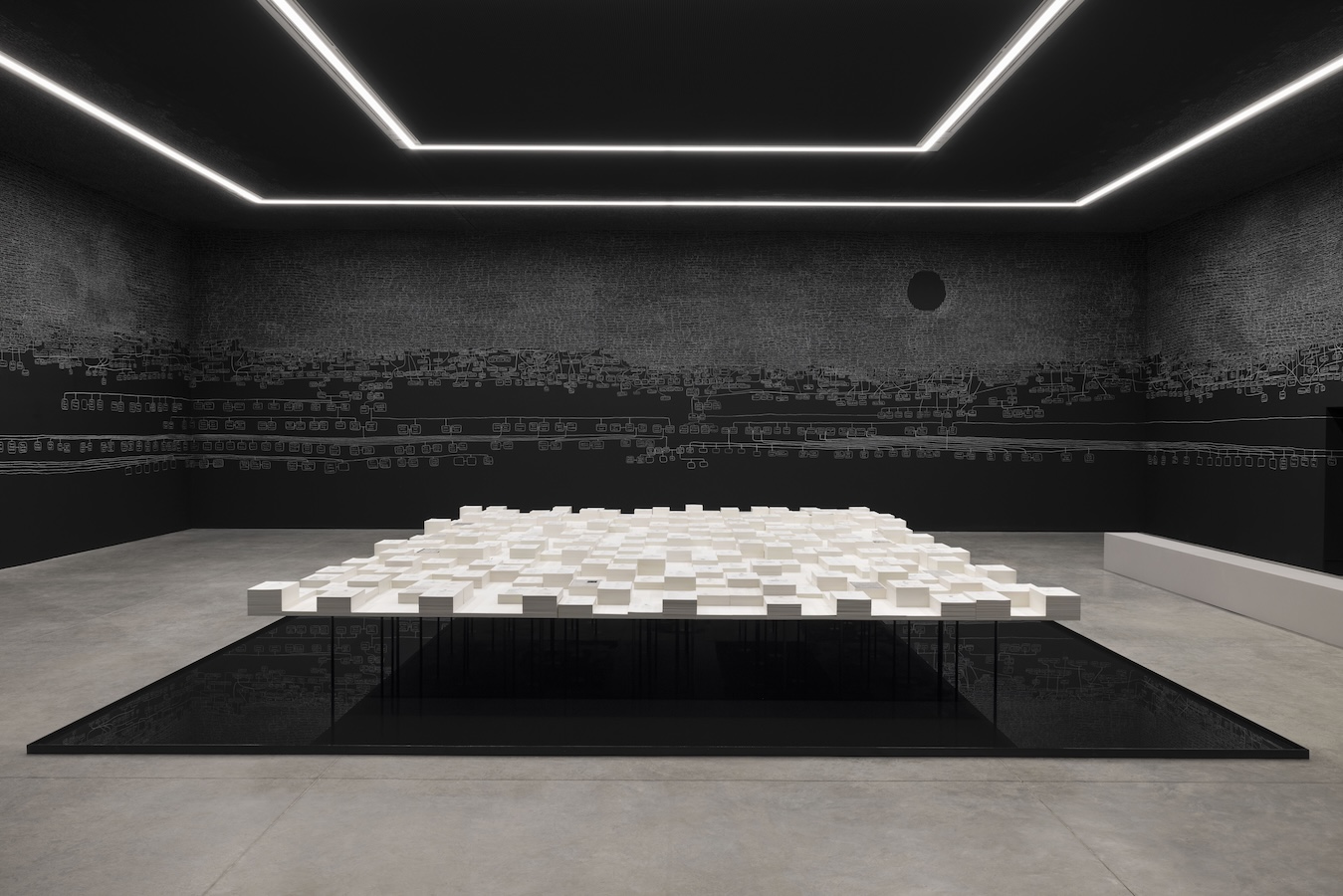This spring in Venice, Italy, coinciding with the 60th Venice Biennale, Ben Brown Fine Arts raised the curtain on “Planète Lalanne,” an all-encompassing presentation of the renowned artistic duo Claude and François-Xavier Lalanne throughout Venice’s Palazzo Rota Ivancich. Currently on view through November 3, 2024, the exhibition rejoices in a decades-long partnership between the late artists and Ben Brown Fine Arts, including more than 150 works of masterful craftsmanship and soaring imagination.
Meticulously curated by Jérôme Neutres, former Director at the Réunion de Musées Nationaux-Grand Palais and former President of Musée du Luxembourg, whimsical art objects, sculptures, and furniture come together in an extraordinary conversation at the intersection of Mother Nature, mythology, and augmented interpretations of domestic life.
Recently, Whitewall had the opportunity to speak with Neutres and Brown about developing a meaningful and ambitious show, the singular journey of taking a walk on Planet Lalanne, and reveling in those treasured artists who invent entirely new worlds.
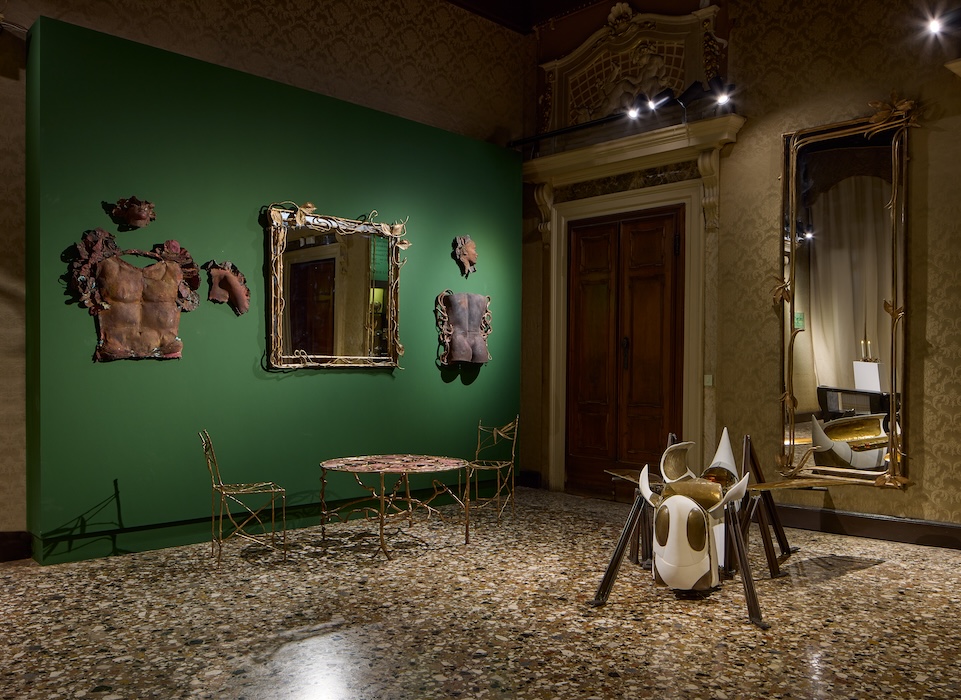 Installation view of “Planète Lalanne” at Palazzo Rota Ivancich in Venice, © Courtesy of Ben Brown Fine Arts, London.
Installation view of “Planète Lalanne” at Palazzo Rota Ivancich in Venice, © Courtesy of Ben Brown Fine Arts, London.
WHITEWALL: What was the starting point for Planète Lalanne? How did the two of you connect on this show?
JERÔME NEUTRES: Ben Brown, who is a longtime friend of mine, got the idea to organize an ambitious show in Venice dedicated to Claude and François-Xavier Lalanne because he realized the Lalanes were never invited to present their work in Venice—which says a lot about misunderstandings between the institutional art world and the Lalanne’s specific and singular body of works.
The idea was to find, in Venice, the right place to reveal the singular essence of the works of the Lalannes. You really needed a palazzo that could look like an inhabited palazzo, and The Palazzo Rota Ivancich has, for us, positive parameters.
We wanted to also play the rules of the game of the Biennale of Venice. Even if it is important to present the Lalannes in Venice, it is very meaningful for us to present it during the all-time, six months of the Biennale, because that is a certain recognition for Claude and François-Xavier.
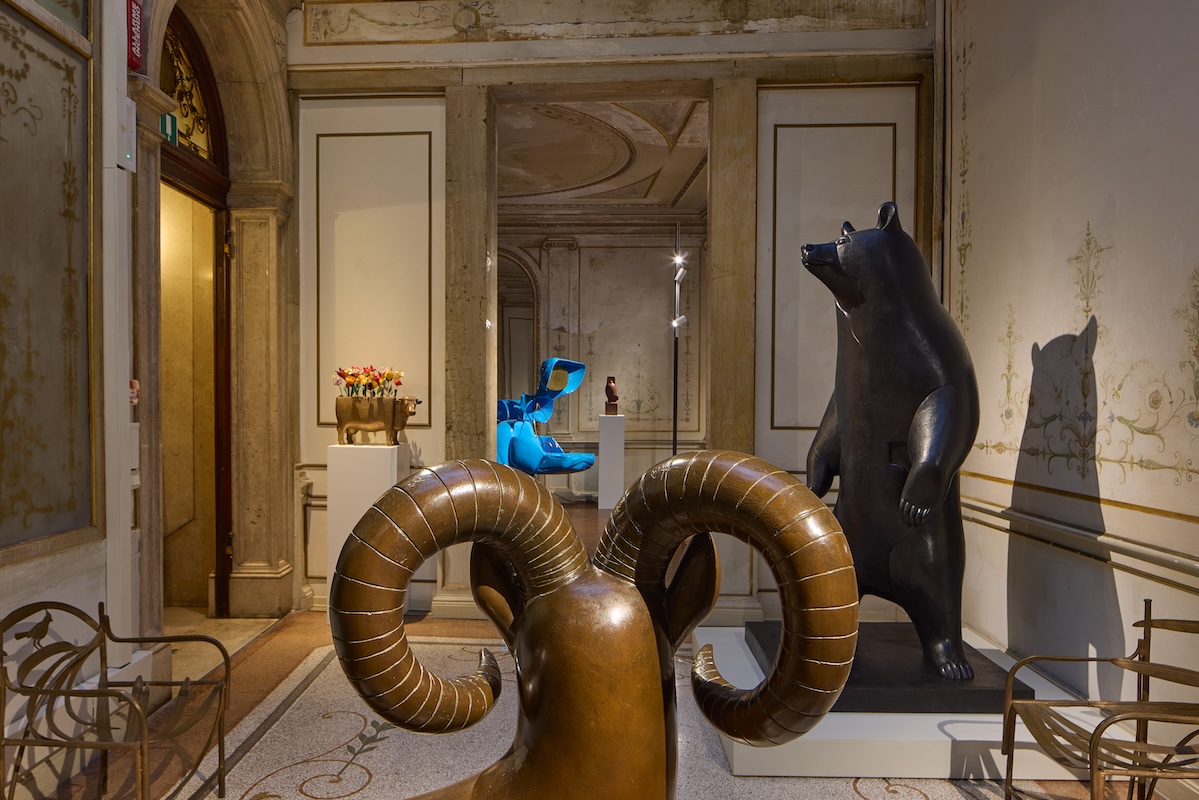 Installation view of “Planète Lalanne” at Palazzo Rota Ivancich in Venice, © Courtesy of Ben Brown Fine Arts, London.
Installation view of “Planète Lalanne” at Palazzo Rota Ivancich in Venice, © Courtesy of Ben Brown Fine Arts, London.
Finding a Space in Venice that Captures the Essence of the Lalannes
WW: This is one of the largest retrospectives of the artists to date. It includes objects, photographs, artworks, and archives. What range of work did you want to bring together?
BEN BROWN: For those who know about Lalanne, I wanted them to see all their favorite things. For those who know nothing about Lalanne, I wanted them to learn.
JN: All along the course we have paintings and large canvases by Francois-Xavier Lalanne which were never shown to any public, or curator.
What I found interesting was to try to add some new thoughts to the collection of the Lalanne’s art, and even for the professionals of Lalannes, meaning the great art lovers and the great Lalannes lovers, I was very happy to see many of them, including their family or longtime collectors, discover pieces or documents that they didn’t know about.
I think that what is important in this large body of canvases, drawings, sketches, and models by Claude, is to emphasize the process of creation of each of the two artists. Generally speaking, we talk about “the Lalannes” but there is Claude and Francois-Xavier. Not only because of the duality of thematics, the vegetal and the animal, because she also dealt with animals and he with plants. It’s more that they had two, separate, very distinct ways of creating works that were so complementary and inseparable that they systematically requested to be exhibited together. That’s an opinion Ben and I share, and we thought it was important to try to invite the visitor to enter not only the imagination created by the Lalannes but also the studios of the Lalannes in a way.
It’s why we titled the show, “Planète Lalanne,” because literally, the visitor is coming to take a walk on the Planète Lalanne.
WW: What is the earliest work on view? Can we see, even then, the surreal world of les Lalannes?
JN: 1966. For me, a retrospective is never something chronological. A retrospective does not mean to be the biography of the artist, but the biography of the works, the true story of the works. In fact, the story of the works, is really, of the Lalannes.
It’s why I put this quote in big letters in the Grande Salon by Francois-Xavier Lalanne, “When you can sit on a work of art, it becomes more familiar.” Also we put this quotation by Pierre Bergé from 1966, their first big show at the Iolas Galerie on Boulevard Saint Germain, when they were discovered by Yves Saint Laurent, and they said, “yesterday we sat on poetry.” And the poetry is laid down in the egg bed which is the Cocodoll 1966 masterpiece.
We have some rare, unique pieces of each period. And what is the story of the artist? It’s also all the themes and the mediums that they use. It was important to include jewelry, small objects, and monumental outer works. A retrospective also has to deal with iconic works that people will recognize as symbols, le Choupatte, les Moutons, works that for a great audience represent and embody Lalanne’s spirit.
Then you also have very rare works like this self-portrait by Claude, she just did her face, and locked in a sort of box. No one had seen this work before. So we wanted these rare, alive, pieces within the body of works of the Lalannes. We tried in each room of this long course to perpetually keep a balance between Claude and Francois-Xavier. To respect, to systematically exhibit the Lalannes together.
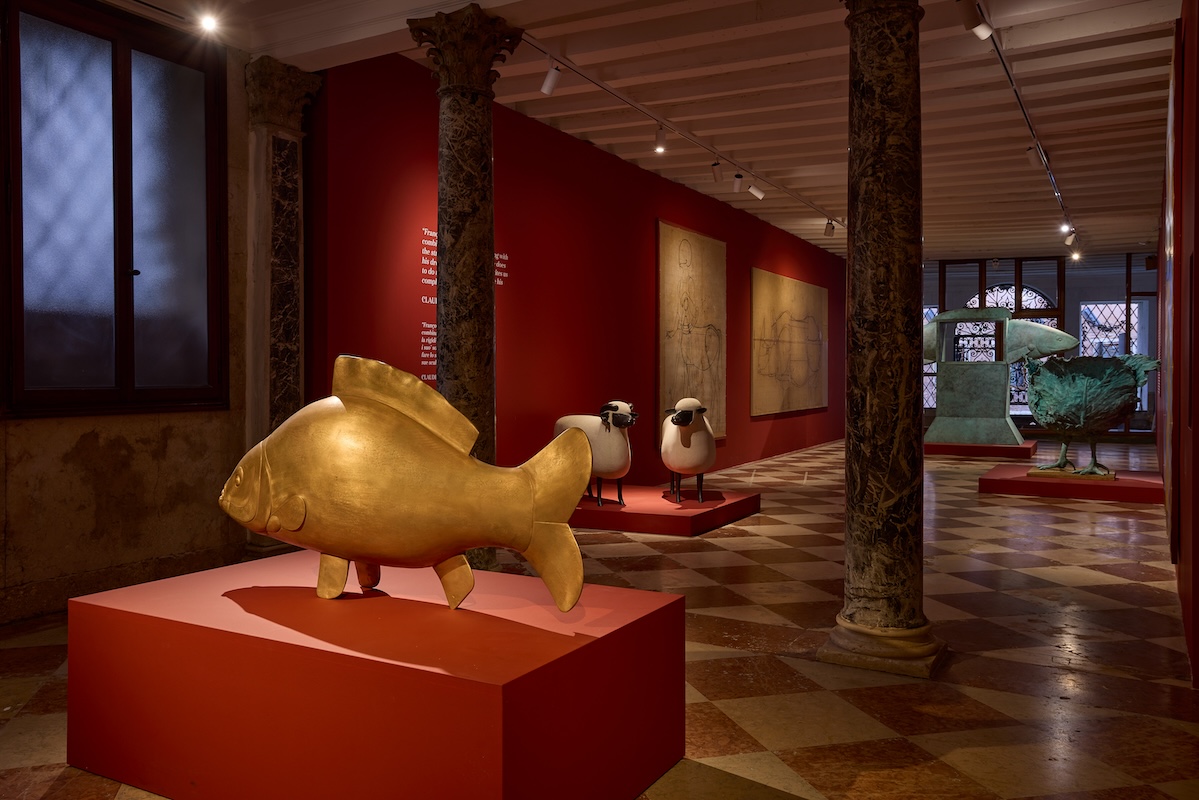 Installation view of “Planète Lalanne” at Palazzo Rota Ivancich in Venice, © Courtesy of Ben Brown Fine Arts, London.
Installation view of “Planète Lalanne” at Palazzo Rota Ivancich in Venice, © Courtesy of Ben Brown Fine Arts, London.
“The visitor is coming to take a walk on the Planète Lalanne,”
— Jérôme Neutres
BB: The Sauterelle Bar, there are two: one belongs to the king of England, and the other one is in the exhibition. That’s pretty good, right? And if you want to borrow one, you either have to write to Buckingham Palace, but I don’t think they’ve ever loaned it. Or, you have to write to me, and obviously I’m going to loan it to myself. The bathtub, there are three: one belongs to the Musée des Arts Décoratifs, one belongs to me but it’s not this one, and I decided it specifically to include this one in the exhibition because of the Matisse heritage.
The Choupatte is arguably the greatest form that Claude ever created. It’s surreal, it goes back to all historical roots, she made it through her life, it’s the cabbage with the chicken feet. I mean, how completely insane is that? It’s absolutely fabulous. And this is not my personal bed, it’s my mother’s personal bed. She commissioned it from Claude Lalanne in 1994. And she’s been sleeping in it since. I met the Lalannes through my mother because they were friends.
WW: Can you tell us what are the pieces, photographs, or archival materials included in the show that the viewers should be sure not to miss?
JN: I wanted to present the useful works as alive works. When you have a bar, we want glass, bottles, ice cubes, and not presented as a sort of dead furniture or pure sculpture. And that is very difficult.
When I exhibited first the Lalannes in the Yves Saint Laurent collection show with Pierre Bergé, I requested to have the bar by Francois Xavier, to really be filled, including with ice cubes. And of course, the curators of exhibitions always panic when you say that. In fact, I think that one of the key aspects of the success of the show in Venice, is that people can see the bed with the pillows and the cover and the bedsheets, and you can see the bars as they are: artworks and bars.
WW: Let’s talk about a quote from François Xavier, “Perhaps, in the end, we live on another planet.” How do you think the artist would describe that planet? How did you want the show to transport the viewers to that planet?
JN: The title “Planète Lalanne” was inspired by this quotation, because I thought it was summarizing, number one, why the Lalannes were, for me, what I call, great artists. The great artists are the artists who invent a new world.
The Lalannes started working in the 1950s in the colony of the artists of Impasse Ronsin, in Montparnasse, where their direct neighbor was Constantin Brâncuși. I think they learned a lot. They also had Max Ernst, Metcalfe, Tinguely, and Niki de Saint Phalle. The early times are fundamentals for young artists. To create a new world, to create a new origin in art, the consequence of that for an artist, it seems like you are coming from another planet.
The Lalannes were very deprived as artists in their recognition in the history of that fusion of absolute singularity. Someone like Brâncuși was never exhibited in his life nor recognized by French institutions while living in Paris, it took them some time to convince museums, institutions, and critics that they were the immense artists they are.
They were supported and welcomed by a community of artists and amazing young collectors of that time like Yves Saint Laurent, Pierre Bergé, Gunter Sachs, the Agnellis, and fantastic art galleries, like Alexandre Iolas, then later Ben Brown, Jean-Gabriel Mitterand, and Kasmin, as well as integrated within programs of galleries dealing with the greatest painters and the greatest sculptors of the time.
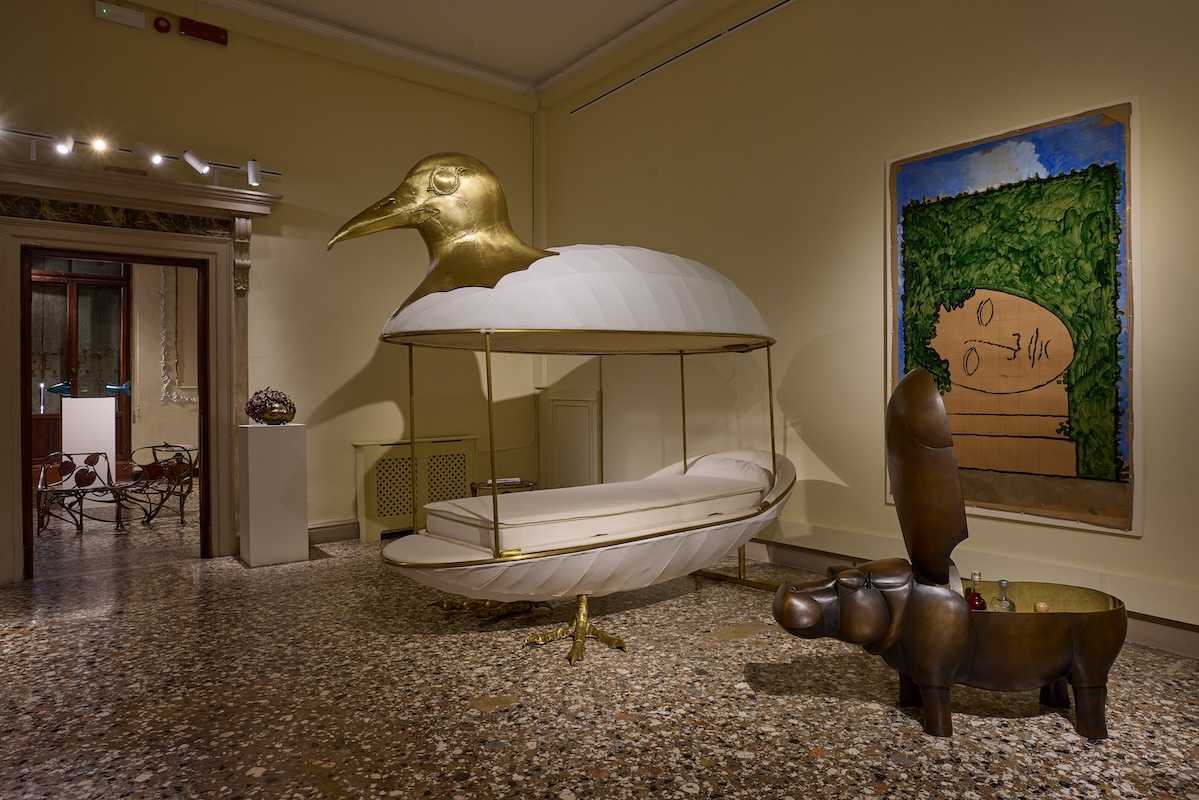 Installation view of “Planète Lalanne” at Palazzo Rota Ivancich in Venice, © Courtesy of Ben Brown Fine Arts, London.
Installation view of “Planète Lalanne” at Palazzo Rota Ivancich in Venice, © Courtesy of Ben Brown Fine Arts, London.
“The great artists are the artists who invent a new world,”
— Jérôme Neutres
BB: “Planète Lalanne” is very important, and I think the way that we got to that is what was very important for the Lalannes, which was creating this world into which you stepped.
You need a yin and a yang of both him and her. This creates a well-rounded world. Within that, a bit of fantasy, and a bit of pragmatism. He wants the nutcase Choupatte next to a ginkgo chair, next to cows that you put books in, and a gorilla that looks at you and serves as nothing. He knows that when you’ve got this balance correct, the world is a better place.
When you went to where they lived, it was one of the most magical experiences in the art world, and it’s also an experience that is indefinable and indescribable because it doesn’t sound like much. It’s a farmhouse, an hour outside of Paris, probably worth 300,000 euros. And people say, ‘what was so magical about it?’ I don’t know, but you walked in there, and it was magical. It was natural, it was perfectionist, even though it looked like a mess.
If Jerome had never been to Ury, he wouldn’t have got it. You needed to go to Ury to understand what I was trying to recreate. They lived in Ury for thirty, or forty years, creating it naturally and organically. I wanted the Venetian palazzo to look like les Lalannes, or Jerome and I, had lived there for thirty years. And I think we succeeded.
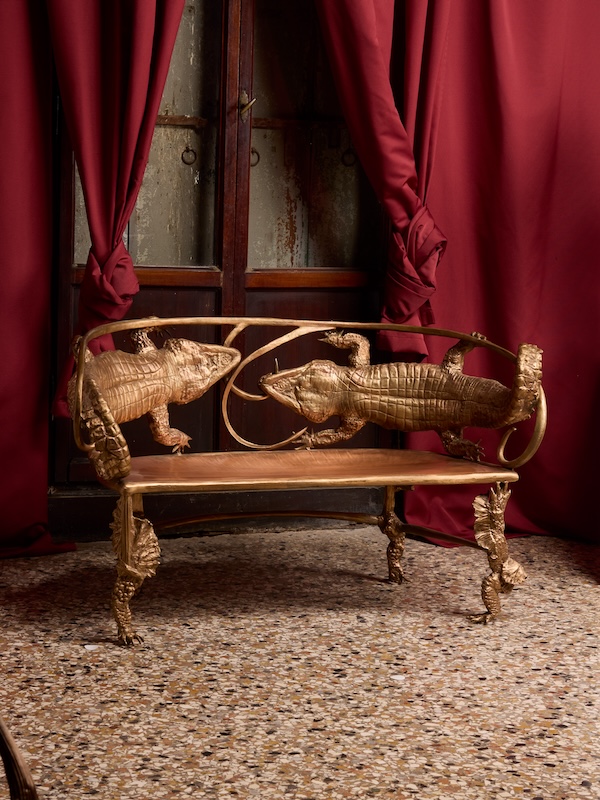 Installation view of “Planète Lalanne” at Palazzo Rota Ivancich in Venice, © Courtesy of Ben Brown Fine Arts, London.
Installation view of “Planète Lalanne” at Palazzo Rota Ivancich in Venice, © Courtesy of Ben Brown Fine Arts, London.
Les Lalannes Push the Boundaries of Art Creation
WW: Where, in art and design, can you see the lasting impact of les Lalannes, even in Venice, this year?
BB: I can see people who are trying to create their own vision highly, highly influenced by Lalanne. But I personally don’t see much because they are so off on their own.
JN: You can recognize the Lalannes within one million other artworks like you can recognize a Brâncuși. I like artists like this who have a strong signature.
The thing is that we also have to recognize when you are an immense artist you have a lot of followers. Like in literature, after Proust, a lot of people tried to write like Proust, but they were not Proust. The same for the Lalannes, of course, you can sometimes see some design or something, but there is not this poetry, this visual strength that you have in the Lalannes. They are inimitable, and the success of the Lalannes today is thanks to that.
At the same time, I think they helped to push the boundaries of art creation. In that sense, you can say that they influenced a lot of contemporary art history, because they, number one, desacralized the art world, putting on a highway of creation by this problematic of the useless and the useful. The “l’art pour l’art,” was evocative that the art world could be useless, that the world was really narrow-minded. I think they explored this concept forever, and in that sense, they participated in the sort of liberation of the art mediums and the art creation.
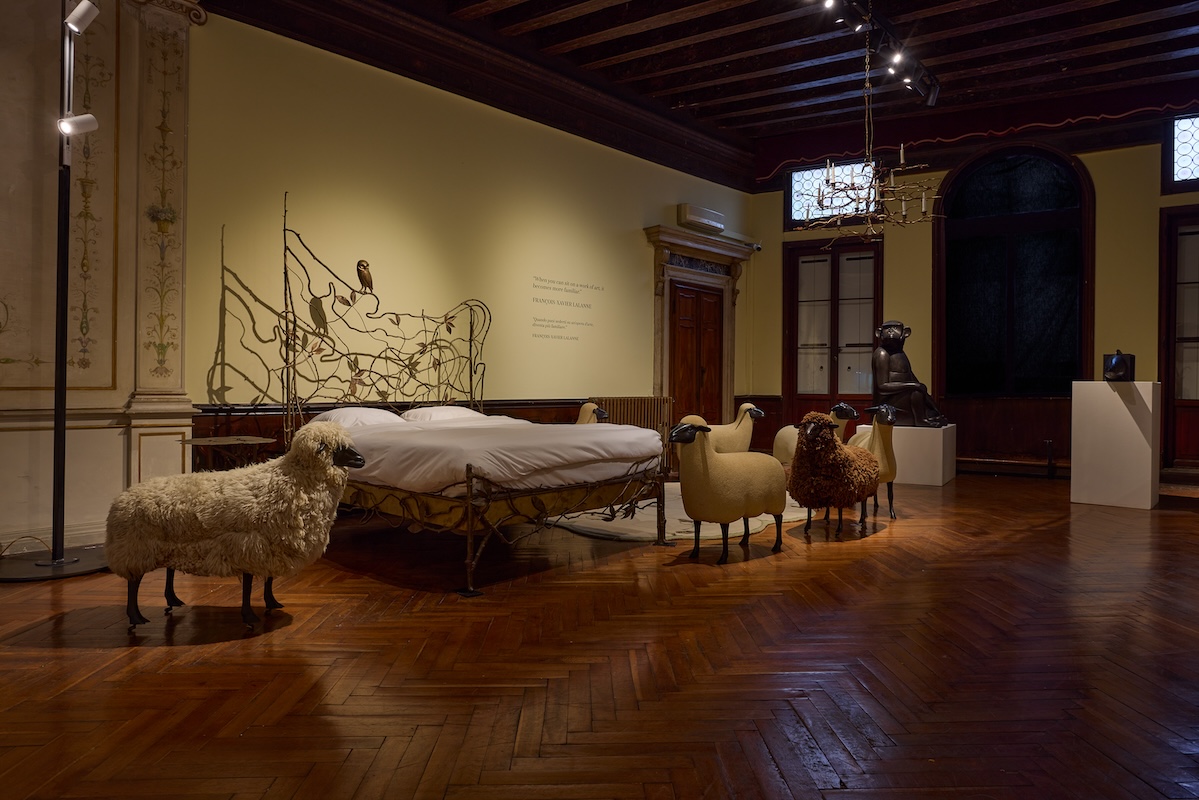 Installation view of “Planète Lalanne” at Palazzo Rota Ivancich in Venice, © Courtesy of Ben Brown Fine Arts, London.
Installation view of “Planète Lalanne” at Palazzo Rota Ivancich in Venice, © Courtesy of Ben Brown Fine Arts, London.







